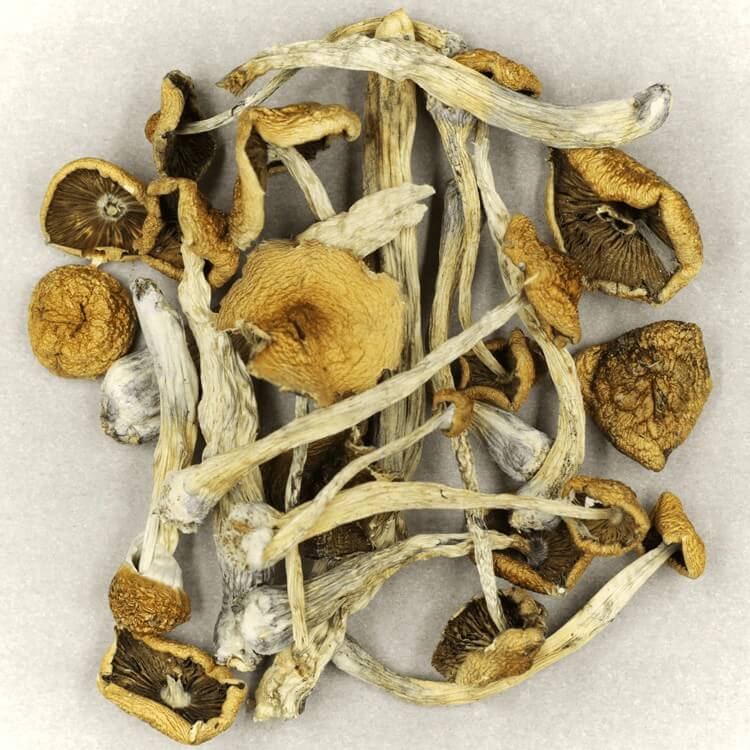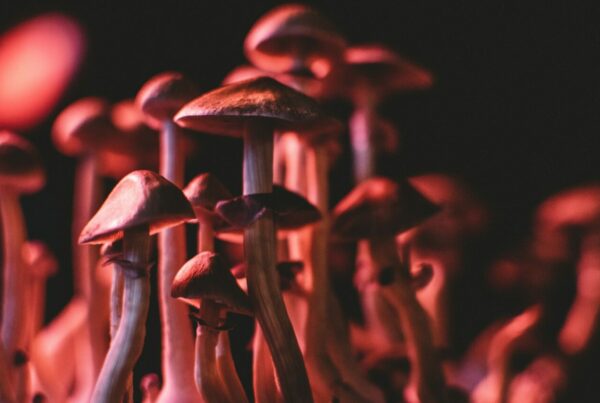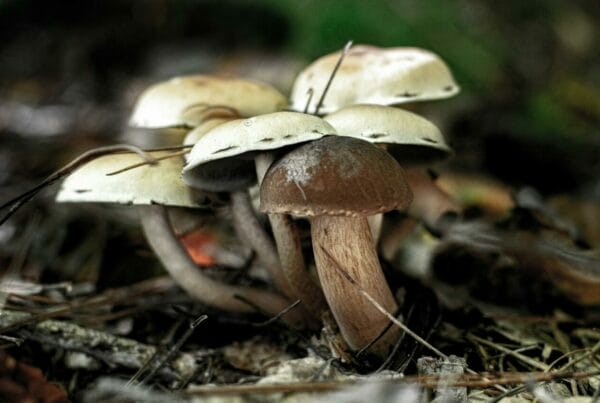Once deemed fantastical, the strength of Psilocybe mexicana is now recognized and respected due to comprehensive psilocybin research. The psychedelic research community has been making steady breakthroughs in understanding its therapeutic benefits, gradually legitimizing its use in medical applications. This evolving field is viewed positively by experts, who are working tirelessly to determine safe dosage levels for medicinal use.
Key Takeaways
- Researchers are using advanced techniques like liquid chromatography and tandem mass spectrometry to assess the potency of mushrooms.
- Psilocybe Mexicana, along with other mushroom varieties, is undergoing clinical trials to evaluate its potential therapeutic benefits.
- Understanding the genetic diversity in magic mushrooms is crucial for creating an accurate dosage guide.
Psychedelic Mushrooms: Emerging from the Shadows to Research Success
In the past, only a limited number of conditions were thought to benefit from Psilocybe Cubensis. However, nowadays, psilocybin is making remarkable progress in revealing its concealed medicinal qualities.
Researchers are harnessing the potential of Psilocybe Mexicana and other potent strains for rigorous research and clinical trials. Regardless of whether the studies are in vivo or in vitro, this strain has proven effective in demonstrating the true effects and benefits of the fungus species.
Psychedelics Gaining Traction
From obscurity to the spotlight—continuous progress and discoveries are attracting more attention, particularly from individuals seeking therapeutic relief. Traditional mental health treatments often fail to meet patients’ needs, leading them to explore more effective alternatives.
Enter the world of magic mushrooms.
Patients dealing with mental health disorders are turning to psilocybin, which has demonstrated potential in treating depression, alcohol addiction, anxiety, compulsive behaviors, tics, chronic pain, among others.
Currently, clinicians are utilizing innovative techniques to accurately determine the ideal dosage for safe patient administration. Notably, a team of researchers from the University of Texas has created a model for extracting psilocybin and psilocin concentrations.
Establishing the clinical potency of magic mushrooms is indeed achievable.
Distinct Properties of Mexicana
Extensive research has already been conducted on Golden Teachers, Blue Meanies, and B-Plus. However, to expand our knowledge of safe magic mushroom consumption, it’s crucial to investigate other species as well.
The Mexicana species is increasingly becoming a preferred subject for research. This is not just because it’s among the oldest species, but also due to its relatively low potency, which may align better with medical drug regulations.
Although the potency of the Mexicana strain isn’t as strong compared to other species, it can still yield similar effects to more well-known strains. With microdosing gaining traction among patients, this strain emerges as an ideal choice.
This strain boasts consistent levels of psilocybin and psilocin, comparable to other strains. So, what makes it a better choice than other similar strains? Its rich historical and anthropological significance provides the answer.
Delving Into a Deep “Mexican” History
In bygone eras, psilocybe mexicana naturally thrived in moss. These psilocybin mushrooms were held in high esteem by indigenous people, often associated with mystical or supernatural occurrences.
Let’s shift our focus to Mexican mushrooms. These shrooms were first used over 2000 years ago by the inhabitants of North and Central America. The Aztecs, an ancient civilization, referred to these mushrooms as the “food of the Gods,” or “teonanácatl” in their native language.
If the Aztecs were around today, they would attest to the transformative, emotionally potent, and mentally balancing effects of the Mexicana—despite not being familiar with these contemporary terms.
Even with diverse cultivation methods, this mushroom has succeeded in preserving its natural psilocybin levels, underscoring its authenticity. This genuineness is a standard that both researchers and psychedelic research institutions greatly appreciate.
Innovative Methods for Psilocybin Content and Potency Testing
A collaborative team of ten researchers from the University of Texas at Arlington and other research institutions devised a novel method for assessing the potency of psychoactive compounds in mushrooms. This new method combines liquid chromatography and tandem mass spectrometry.
Here are two groundbreaking techniques:
- Liquid chromatography is a technique to separate and analyze chemical mixtures, including the active chemicals found in mushrooms. A liquid sample is passed through a column packed with a solid material referred to as the stationary phase. The different chemicals in the sample interact with the stationary and mobile phases in distinct ways, leading to separation at different rates as they move through the column.
- Spectrometry typically examines the interaction between matter and electromagnetic radiation across a variety of wavelengths. It identifies and quantifies substances based on the specific wavelengths of light that molecules absorb and scatter, which in turn allows for the determination of the electronic, vibrational, and rotational states of the chemical.
This method was employed on five strains of magic mushrooms. The researchers found that the average total levels of psilocybin and psilocin across these strains varied from 0.879 to 1.36. These concentrations exceeded those found in many other strains, such as Bull Run and Cambodian. The accuracy of the study was confirmed by comparing the findings with those from independent labs.
The consistent results between the two labs further supported the reliability of their testing method in accurately determining the potency of the mushrooms.
If validated by specialists, this could lead to the introduction of innovative techniques to the current psychedelic strength testing methods, serving as an additional safety measure to prevent incorrect dosage calculations.
Expanding Research to Include Other Species
Conducting research on other species is beneficial as it can improve our knowledge of the health benefits linked to different strains, and provide essential data on the effects of less potent mushrooms.
Furthermore, it can help educate individuals about the influence of different dosages on the psychedelic experience. By comparing Mexicans with more potent strains like Psilocybe Cubensis, researchers can understand how variations in the concentration of active compounds can affect therapeutic outcomes.
For example, the Blue Meanies strain induces more powerful hallucinogenic effects, which could potentially be useful in treating conditions like depression. On the other hand, strains with lower potency are more suitable for microdosing or subtle uses such as mood enhancement or improved focus.
Genetic Diversity Leads to Safer Treatments
It’s not widely recognized that distinct cultivars or varieties have unique genetic profiles and differ in their potency, chemical composition, and effects. This diversity allows health professionals to select the most suitable variety for specific medical applications, and to adjust dosages to meet each individual’s needs. This customization minimizes potential risks while maximizing benefits.
Consider, for instance, Psilocybe Semilanceata (Liberty Caps) or Psilocybe cyanescens. These possess distinct alkaloid profiles that may be effective for treating anxiety. On the other hand, synthetically grown mushrooms could be more suitable for addressing substance addiction or compulsive behaviors. This diversity aids in developing personalized treatments with enhanced safety and efficacy.
From this, we can infer that the genetic diversity among hallucinogenic mushrooms, along with novel methods of potency assessment and identification, is critical for devising safer medical treatments.
Enhanced Safety in Medical Use
Let’s contemplate the potential benefits of safer dosage practices.
- Decreased occurrence of overdosing: Accurate dosing eliminates the concern of overdosing. This also means that product labels should be more explicit to avoid consumer misunderstanding.
- Improved predictability: Users can expect more consistent effects or experiences during their journeys with more precise dosing. This can alleviate overwhelming feelings and anxiety, thereby increasing patient satisfaction.
- Standardized measurement: In one way or another, dosage precision can lead to a standard measure, enabling people to refer to charts for potential effects with ease.
Experience the Advantages of Accurate-dose Shrooms via Advanced Potency Tests | Order Magic Mushrooms Online at Shroom Delivery Canada
If these two cutting-edge techniques continue to be employed, you won’t have to deal with unforeseen effects. Pair this with smart online shopping at Shroom Delivery Canada. We offer dried mushrooms that provide a serene, restful psychedelic journey without excessive psychoactivity. Order psychedelics online in Canada through Shroom Delivery Canada.
Frequently Asked Questions
Are Big Mexicans and Psilocybe Cubensis the same?
No, Big Mexicans and Psilocybe Cubensis are distinct mushroom strains, so they should not be confused. Big Mexicans have a higher compound isolation, ranging from 0.5% to 1%, thus making them significantly more potent.
Mexican mushrooms, also known as Psilocybe Mexicana, contain less psilocybin compared to Psilocybe Cubensis. It’s also important to note that their physical appearances vary: Psilocybe Mexicana usually has a bell-like cap, while Psilocybe Cubensis typically has a conical shape.
What is the highest concentration of psilocybin in Mexican mushrooms?
The concentrations of psilocybin and psilocin in Mexican mushrooms can peak at 0.25%. While these concentrations are relatively low, similar to the Golden Teacher strain, they can still instigate profound psychedelic experiences that may potentially offer health benefits.
What is the recommended safe dosage for medical use?
The usual prescribed dosage falls between 1 and 2 grams. However, this can fluctuate depending on factors like the method of consumption, the user’s metabolism, and the specific strength of the mushroom strain. Some individuals opt to take doses below the threshold, ranging from 0.05 (50mg) to 0.025 grams (250mg), in an attempt to reduce the hallucinogenic effects.





